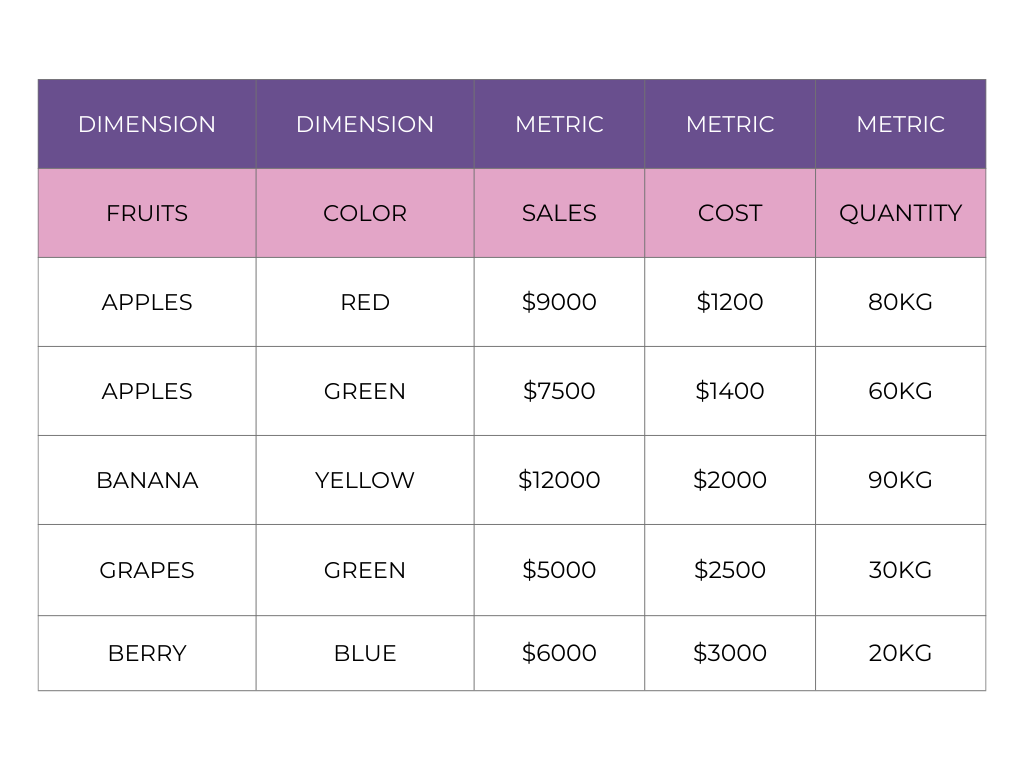What Are Dimensions?
Think of dimensions as the descriptive attributes that help categorize and segment your data. They answer the “what,” “where,” and “who” questions in your analysis. Dimensions are qualitative and provide context to your data, helping you break it down into more manageable pieces.
Examples of Dimensions:
Retail: Product name, category, location, or customer demographics.
Web Analytics: Source/medium, page title, or device type.
What Are Metrics?
Metrics, on the other hand, are the quantitative measurements that track performance or outcomes. They answer the “how much” or “how many” questions in your analysis. Metrics are the numbers that show progress, success, or areas for improvement.
Examples of Metrics:
Retail: Revenue, number of items sold, or profit margin.
Web Analytics: Page views, bounce rate, or conversion rate.

Dimensions vs. Metrics: Key Differences
1. Nature of Data:
Dimensions are qualitative and describe characteristics.
Metrics are quantitative and measure quantities.
2. Role in Analysis:
Dimensions provide context for your data.
Metrics provide the data to be measured and analyzed.
3. Interdependence
Dimensions and metrics work hand-in-hand. Dimensions break down metrics, giving you deeper insights. For example, instead of just looking at total revenue (a metric), you might look at revenue by product category (a dimension) to see which categories are driving sales.
Conclusion
Dimensions and metrics are the building blocks of data analysis. Dimensions give context to your data, helping you categorize and segment it, while metrics provide the measurements that track performance. Together, they allow you to gain deep insights and make data-driven decisions.
